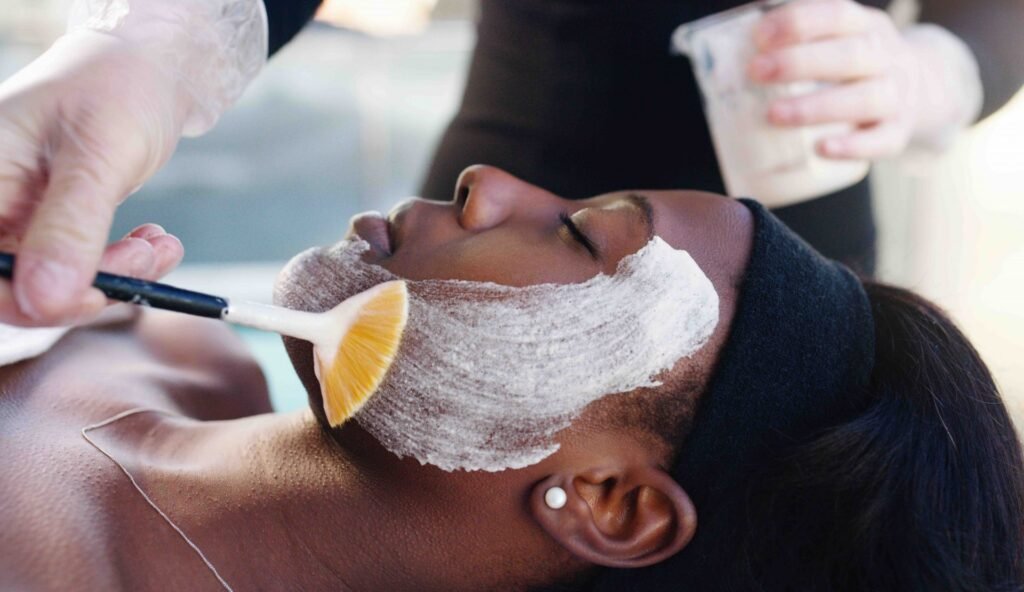The Hidden Risks of Cosmetic Procedures for Patients of Color
In the wake of increased interest in cosmetic procedures during the pandemic, many patients, particularly those with melanin-rich skin, are facing unfortunate consequences due to inadequate treatment practices. Experts highlight the alarming trend of botched treatments for patients of color, which can result from a lack of training among medical professionals in this area.
Understanding the Challenges
Dr. Jasmine Onyeka Obioha, a dermatologist at Cedars-Sinai, emphasizes that improper execution of procedures like chemical peels and laser hair removal can exacerbate skin issues. These treatments, when mishandled, can inflame skin and lead to a condition known as hyperpigmentation — a common consequence for darker skin tones.
“Patients are often seeking help for complications from treatments done by medispas or even by dermatologists,” says Dr. Obioha. “This is part of a larger issue of healthcare disparities affecting patients of color, and dermatology is no exception.”
Lack of Specialized Training
One primary concern in dermatology education is the representation—or lack thereof—of skin of color in training materials. A 2018 review in the journal Social Science and Medicine revealed that only 4.5% of images in dermatology textbooks feature dark skin. Consequently, many medical students graduate without a thorough understanding of skin conditions that predominantly affect people of color.
Patient Education: A Crucial Step
Dr. Obioha advises patients to take an active role in their skincare journey. Here are some steps to ensure you receive appropriate care:
- Inquire About Experience: Call dermatologist offices ahead of time to ask if the specialist has experience treating skin of color.
- Seek Specialized Treatments: When it comes to procedures like laser hair removal or chemical peels, look for practitioners who are knowledgeable about the specific needs of melanin-rich skin.
Risks of Cosmetic Treatments for Darker Skin
Common Procedures and Their Effects
-
Chemical Peels:
- Deep Peels: Should generally be avoided for darker skin due to risks of severe hyperpigmentation.
- Superficial Peels: These are safer and often effective.
- Laser Treatments: Here, advancements in technology have provided more options for all skin types. Lasers with appropriate frequencies can safely improve skin texture and appearance.
“Laser resurfacing technology has improved and offers diverse options for all skin types,” Dr. Obioha adds.
- Liquid Nitrogen Treatments: These can leave light spots on darker skin. Electrocautery, a method that burns off benign growths, presents a lower risk.
Recognizing Skin Conditions in Darker Skin
Patients must also be aware that certain skin conditions manifest differently depending on skin color. For example:
- Psoriasis tends to appear as salmon-colored patches on lighter skin but presents as deep purple patches on darker skin.
- Central Centrifugal Cicatricial Alopecia, a type of hair loss prevalent among African Americans, looks similar to female pattern baldness but necessitates different treatments.
Dr. Obioha warns, "Imagine permanently losing your hair only to learn that it could’ve been avoided with the right diagnosis."
Navigating Cultural Sensitivities in Patient Care
When providing treatment recommendations, medical professionals must acknowledge cultural practices. For instance, prescribed treatments that do not consider the hair care routines of Black women may be ineffective.
- Hair Washing Routines: The majority of Black women wash their hair less frequently than what typical clinical recommendations suggest.
- Handling Hair Loss: Conversations around styles such as extensions should be handled sensitively, as these can greatly impact a patient’s self-image.
“Physicians need to grasp the nuances of ethnic skin and hair. Otherwise, patients will lose confidence in them,” Dr. Obioha emphasizes.
Conclusion
In conclusion, as the demand for cosmetic procedures continues to rise, it is essential for both patients and healthcare professionals to prioritize education, training, and communication about the specific needs of patients with darker skin tones. Being informed about the potential risks, and knowing how to advocate for oneself, can help ensure safe and effective treatment.
For more on skin health and potential risks, consider reading additional resources on Curbing Your Risk of Skin Cancer and exploring educational materials online.


